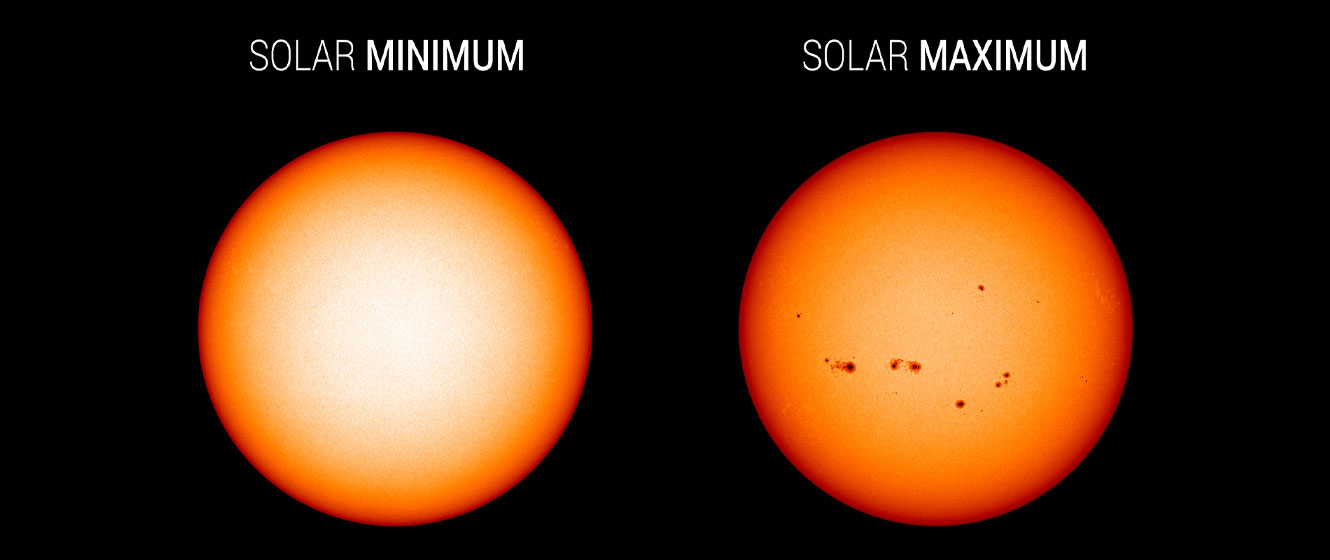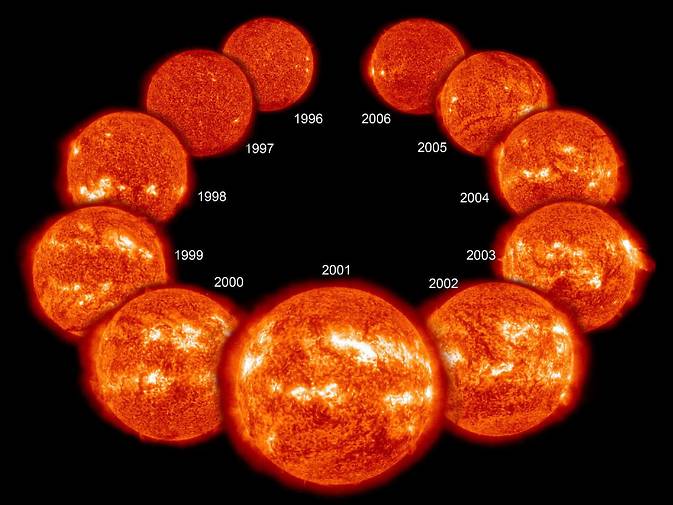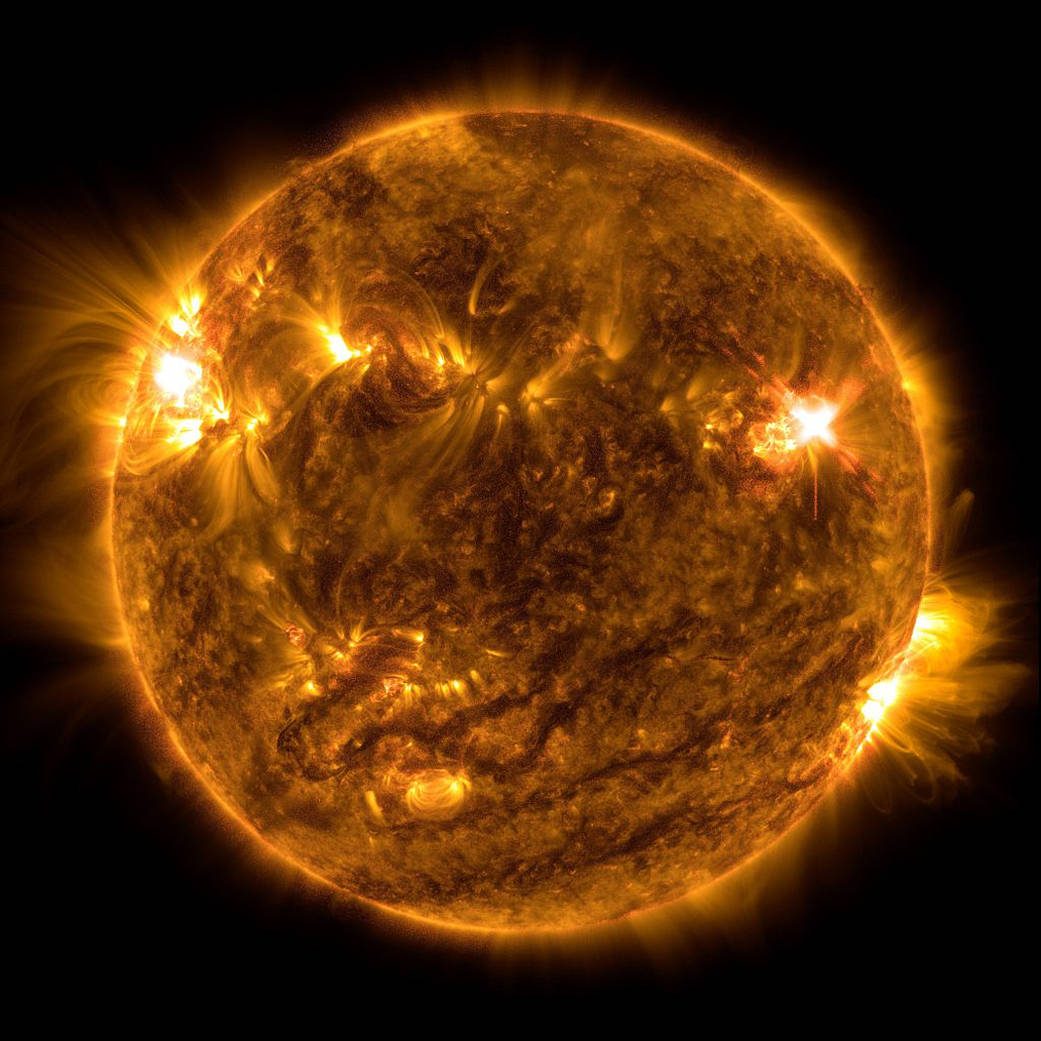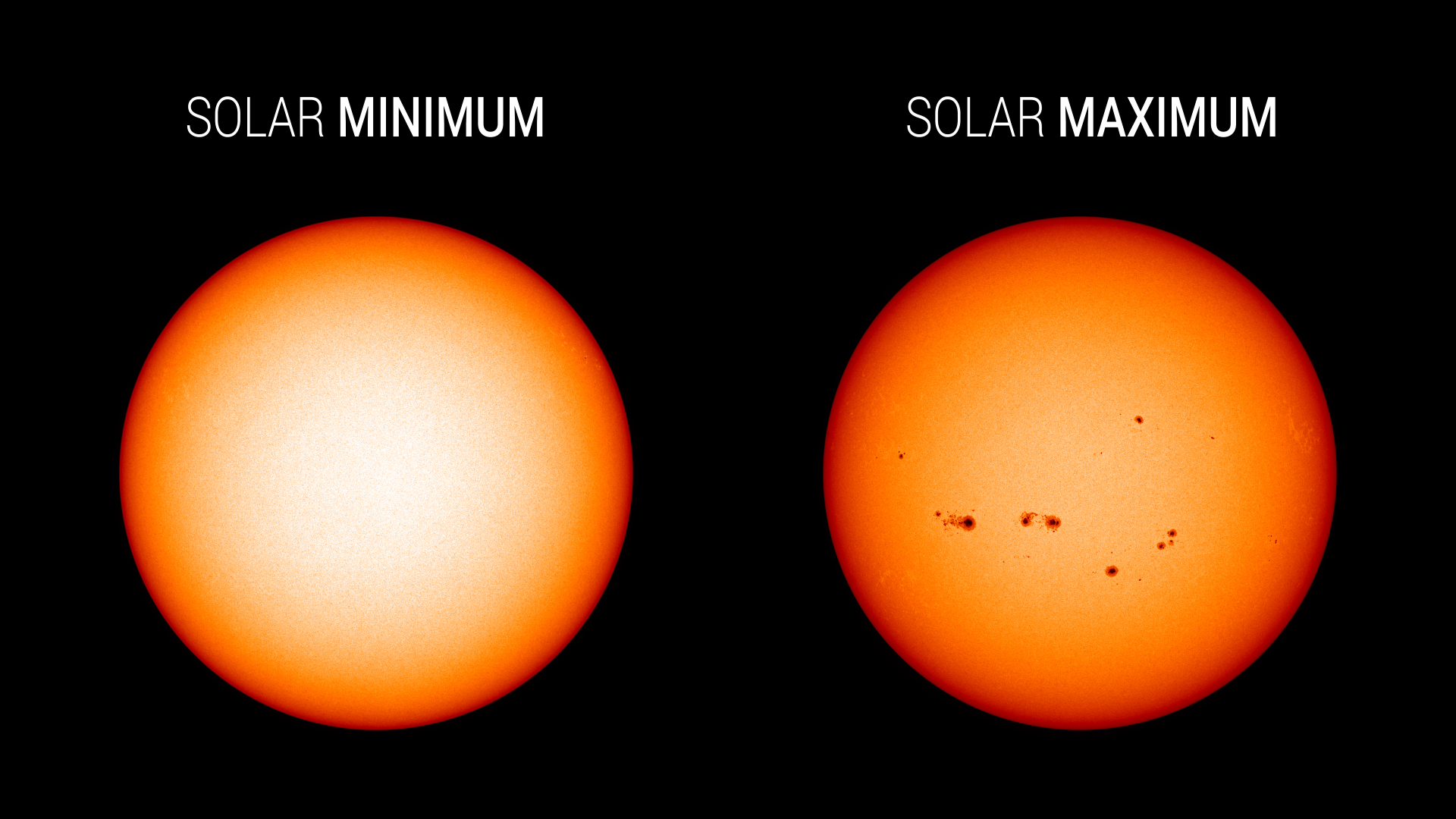
Our Sun gives us a unique opportunity to study a star up close, but while we’ve been observing it for hundreds of years, there’s still much that remains only partly understood, or even a complete mystery. One thing we don’t fully understand is the solar cycle. So what is it? And what do we already know about it?
What is the Solar Cycle?
The Sun, of course, is our nearest star in space. A star is primarily composed of helium and hydrogen and generates heat and light through the process of nuclear fusion at its core.
For longer than there’s been an Earth, there has been a Sun. It has been a constant source of light and heat, and has risen in the morning and set in the evening every day over the course of the past four and a half billion years - even if humanity hasn’t been around to witness it.
However, that’s not to say it’s always been the same, and while it’s not a living entity, it goes through cycles of change the same as any living creature.
One of the changes we know of (and at least partly understand) is the solar cycle. Also called the sunspot cycle, it lasts roughly 11 years and directly relates to the frequency of sunspots that appear on the Sun’s surface.
At the peak of each cycle - called solar maximum - sunspots appear more frequently, while at the end of the cycle (and the start of the new one) - called solar minimum - sunspots are in short supply and can even disappear completely.
A Brief History of Solar Cycles
This cycle was first noticed in the late 18th century when the Danish astronomer Christian Horrebow noted that the number of sunspots appeared to repeatedly increase and decrease over the course of a number of years.
However, the cycle itself wasn’t clearly identified until 1843, when the German astronomer Samuel Heinrich Schwabe announced its discovery after 17 years of solar observations. Twelve years later, Schwabe’s extensive data provided the foundation for the Swiss astronomer Rudolf Wolf to designate the first known solar cycle as starting in February 1755.
Since that time, the Sun has gone through 24 complete cycles. The 25th, our current cycle, started in December 2019, with the maximum predicted to begin in July 2025 and the 26th cycle starting in 2030.
On average, each cycle has lasted about 11 years, but that’s not to say there hasn’t been some variance. For example, solar cycle 2 began in June 1766 and ended nine years later, in June 1775. However, solar cycle 4 began in September 1784 and ended in April 1798, thereby lasting 13 years and seven months.
What Causes the Solar Cycle?
While the concept of the solar cycle is simple enough, the mechanisms that drive it are a little more complicated and not as well understood. However, at its heart is the Sun’s magnetic field.
The Sun, like the planets that orbit it, spins on its axis, but since it has no solid surface, different regions rotate at different speeds. More specifically, the equator spins more rapidly than the poles. This, in turn, causes the Sun’s magnetic field to become twisted, and where it becomes tangled, it penetrates the solar surface and causes a sunspot to form.
The more active the Sun’s magnetic field, the more sunspots appear. More specifically then, the solar cycle is really the cycle of its magnetic field.
Roughly every 11 years or so, the magnetic field goes through a quiet period - the solar minimum. Then, about five and a half years later, when the magnetic field is at its most turbulent, the solar maximum occurs. The cycle then ends and begins anew with another solar minimum.
The magnetic field itself is generated through the movement of charged particles (plasma) at the Sun’s core. As these particles interact, they create electrical currents, which then generate magnetic fields.
Beyond this, the causes of these fluctuations in the magnetic field remain something of a mystery.

Image Credit: NASA
How Does the Solar Cycle Affect the Earth?
Although the Sun is 93 million miles (150 million kilometers) away, it still has an obvious effect on the Earth, and as you might expect, any changes there can have an impact here.
What follows are just some of the ways the Sun’s magnetic field and sunspot activity indirectly influence our life on Earth:
- Aurorae
- Radio and power blackouts
- Changes in temperature
Aurorae
As mentioned above, when the Sun’s magnetic field becomes tangled at a particular point, it breaks through the surface of the Sun and forms a sunspot. This interaction causes an enormous amount of energy to be generated and then thrown away from the Sun’s surface in the form of a solar flare.
(Solar flares will continue, even after the sunspot has formed, as that part of the magnetic field will remain turbulent as long as the sunspot exists.)
Solar flares typically take several days to reach us and can have several effects on our own magnetic field. The first of these, the aurorae, is a relatively benign effect that is best seen from the polar regions of the Earth.
When the charged particles in the flare hit the Earth’s own magnetic field, they follow the magnetic field lines toward the poles, where the lines converge. As the particles enter the atmosphere, they collide with gas particles (primarily oxygen and nitrogen) and release energy in the form of light.
In most cases, the aurorae tend to remain visible close to the poles, but the stronger the flare, the further towards the equator the particles will travel. During the Carrington Event of 1859, a massive solar storm hit the Earth that caused aurorae to be seen in the tropics.
It also had a more malignant effect that could have serious consequences in today’s technological age.

Image Credit: NASA/SDO
Radio and power blackouts
On September 1st, 1859, the British astronomer Richard Carrington observed a huge coronal mass ejection (CME) from the Sun. A CME is, essentially, a superflare, and in this instance, it traveled unusually fast and hit the Earth just seventeen and a half hours later.
Besides causing aurorae to be seen in latitudes close to the equator, the electrically charged particles also hit the telegraph system in use at the time. Widespread disruption followed, with some operators reporting shocks and even cases of the paper catching fire.
The implications for today’s society are much more far-reaching. If a similar event were to occur today, it could not only seriously disrupt satellite communications, GPS systems, and radio signals, but also cause damage to power grids and the global infrastructure as a whole.
For example, on March 13th, 1989, the entire province of Quebec in Canada suffered a power outage following the arrival of a solar flare that had erupted from the Sun three days earlier.
Changes in temperature
While evidence of modern climate change overwhelmingly points to man-made factors, such as the production of greenhouse gasses (including carbon dioxide, methane, and nitrous oxide), there’s some evidence to show the Sun has also influenced life on Earth in the past.
For example, in the late 19th century, the British husband-and-wife team of E.W. and Annie Maunder identified a lack of sunspots between 1645 and 1715. Their work was published in 1894, with the period now known to astronomers as the Maunder Minimum.
The Maunder Minimum was later linked to an unusually cool period that occurred within the same timeframe.
When the Sun produces fewer sunspots, it also produces less energy, and this may have an impact on the Earth’s climate. In the case of the Maunder Minimum, the average global temperature dropped by about 3.6°F (2.0°C), causing what has come to be known as “the Little Ice Age.”
(E.W. Maunder is also responsible for the “butterfly diagram” - a plot of the distribution of sunspots observed at various latitudes on the Sun’s surface over a period of several years. When plotted in this manner, the dots on the diagram appear to form the shape of a butterfly.)
Nowadays, there are more than 40 solar observatories around the world, as well as a number that operate in space. Together, these observatories provide us with critical data that can help us to better understand the Sun and its influence on the Earth.
Without them, and the advance warnings they provide, we could literally be left in the dark!

Learn More
Interested in learning more about the sun and our solar system? Not sure where to begin? Check out our Astronomy Hub!











